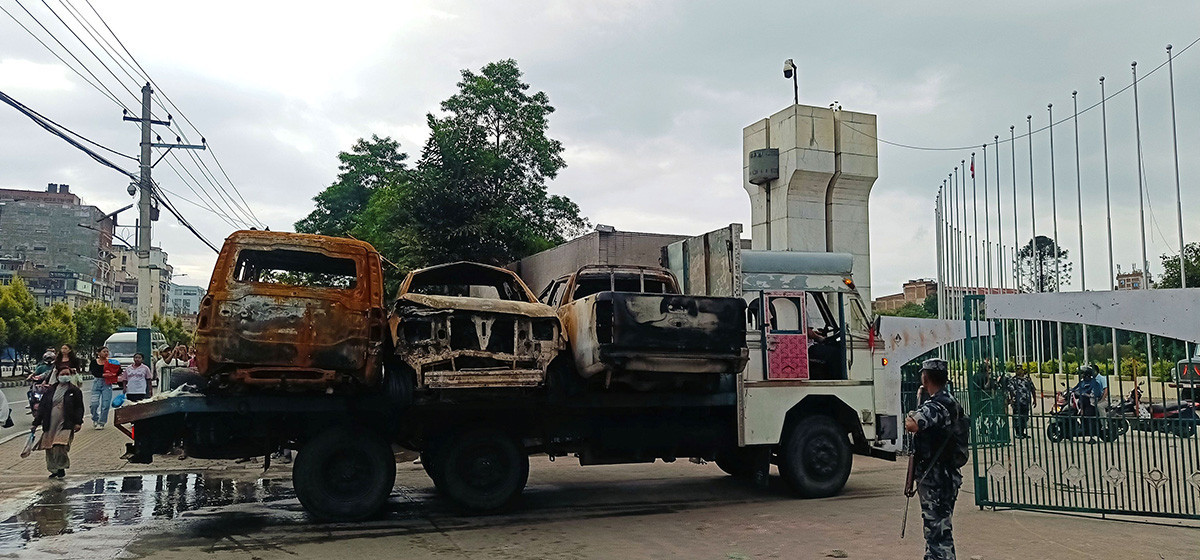KATHMANDU, May 14: When Indian Prime Minister Narendra Modi announced to speed up development of Pancheshwar Multipurpose Project during his Nepal visit in 2014, many thought that the bilateral project, which had remained in paper for 18 years, would finally kick off.
During the visit, the first by an Indian Prime Minister in 17 years, Nepal and India agreed to set up a project executing entity called Pancheshwar Development Authority within 6 months and give final shape to the detailed project report (DPR) and begin implementation within a year -- August 2015.
Four years down the lane, there is no visible outcome as agreed. Work on DPR still remains incomplete, and project implementation is not moving ahead.
This, however, does not mean that there were no deliberations and discussions toward implementing the mega project. But the fact is neither of the sides was serious.
The main issue of contention is sharing of value-added water. The bilateral agreement says that all the benefits and costs of the plant will be equally shared.
Nepal wants equal share of energy generate by the project, while it has demanded that additional payment from India on other benefits of the project like use of value-added water for irrigation and flood control as Nepal will not be using water discharged by the project.
APF border out post established at Pancheshwar

During bilateral meetings, India has been arguing that it will pay compensation only for additional water on top of what it is currently using.
The second meeting of team of experts, which is entrusted with the task of resolving issues and differences in draft DPR document by the governing body co-chaired by Nepal's Secretary of Water and Energy Commission Secretariat Madhusudan Adhikari and his Indian counterpart, held in New Delhi ended without signing minutes of meeting in September last year.
The governing body has held five meetings since it was set up in 2014.
The team of experts has not met ever since and there is no plan of holding its meeting anytime soon.
Both Prime Minister K P Sharma Oli and his Indian counterpart Modi have held bilateral visits to each others' country over the past one month. But the mega project surprisingly did not feature in joint statements issued after both visits. PM Oil said in the joint press conference held in Kathmandu that Nepal wants to complete the DPR and start the project at the earliest. In response, PM Modi talked about the project but it didn't feature in the joint statement.
Addressing the Nepali parliament in his first state visit to Nepal in 2014, Modi had put emphasis on harnessing water resources of Nepal, stating that Pancheshwar was one of India's key priorities.
Between 2014 and 2018, several bilateral technical teams formed under the governing body have completed tasks given to them. The earthquakes of Nepal and Indian blockade thereafter hindered the works and impacted Nepal-India relations. It started to improve only recently.
The project of this magnitude, which is estimated to generate 10,671 GWh of power annually, demands serious efforts from both the countries. But it is not happening. Recent bilateral visits of both the prime ministers show that India is not serious about implementing the project, according to former government officials.
“India does not seem to be in mood of addressing Nepal's genuine demand of paying value for the use of value-added water,” Surya Nath Upadhyaya, former energy secretary and a member from Nepal in Eminent Persons Group on Nepal-India ties.
Similarly, Khadga Bahadur Bisht, former president of Independent Power Producers' Association Nepal, said he fear the issue of water-sharing won't be addressed anytime soon.
But government officials do not agree with the former secretary Upadhyaya and Bisht. Spokesperson for the Ministry of Energy, Water Resources and Irrigation, Dinesh Kumar Ghimire, said it would be inappropriate to say nothing has happened. “Rounds of bilateral meetings have been held and both sides have shared comments on the draft DPR,” he said, adding: “As many as 400 out of about 500 issues on draft DPR have been resolved. Remaining will be resolved soon.”
Ghimire, however, acknowledged that issues related to water sharing and Nepal's demand for additional benefits of value-added water have yet to be addressed. “Nepal has made it clear that it only needs energy, and has demanded price of value-added water which India can use for irrigation and other purposes,” he added.
In 2014, the governing body hired WAPCOS Ltd, a consultant company owned by the Indian government, to synthesize separate detailed project reports prepared y Nepal (1995) and India (2003). WAPCOS submitted the synthesized draft DPR to the governing body in 2016.
The government body then decided to take comments on the combined draft DPR from both sides. It has handed over comments to the team of experts for settling.


































